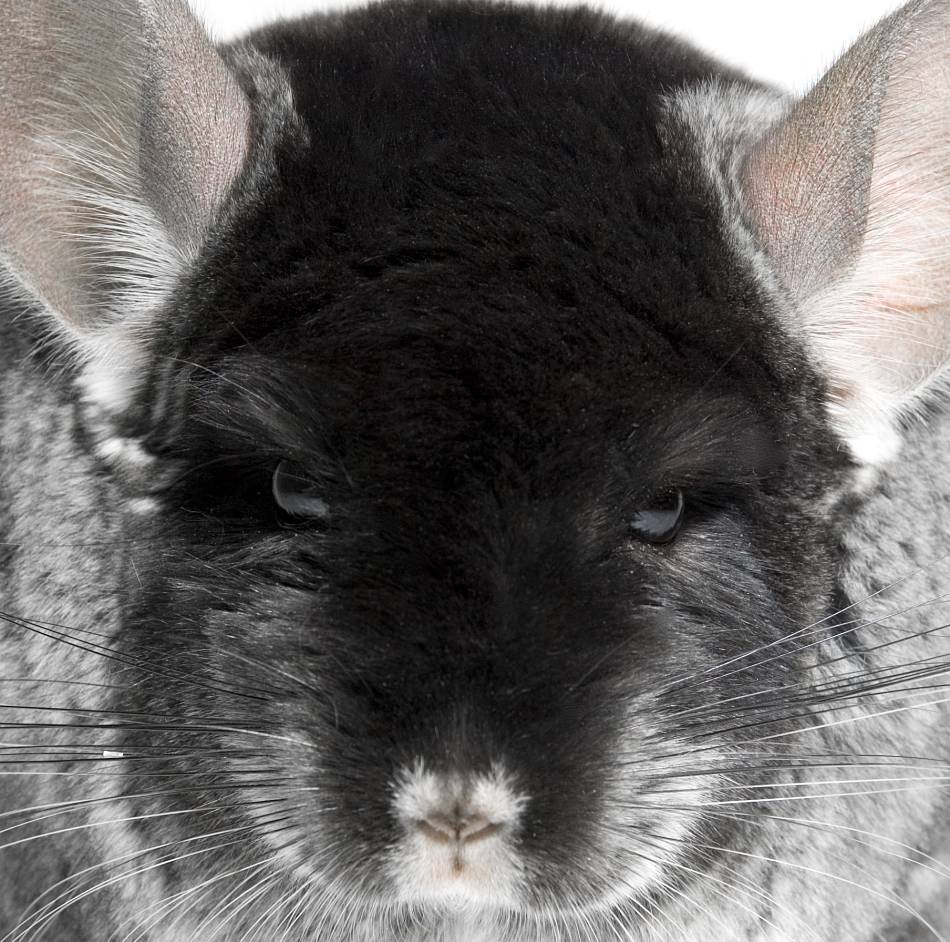chinchilla Facts
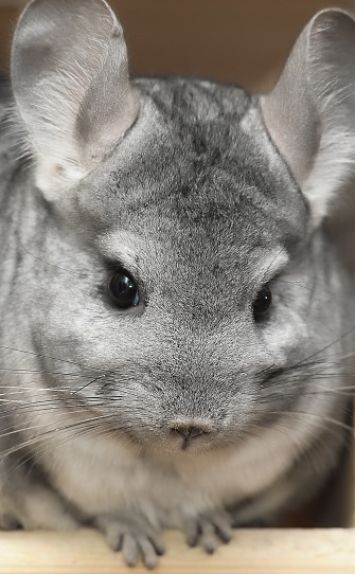 Portrait of a Chinchilla
Portrait of a ChinchillaOne of the most amazing of all chinchilla facts is that each hair follicle may have between 60 and 80 hairs growing out of it! The chinchilla is a small, highly social rodent native to the Andes mountains of South America. The family chinchilidae includes 2 species of chinchilla and 4 (some recognize 5) species of vischachas, all quite similar in appearance.
The 2 chinchilla species are the long tailed chinchilla and the short tailed chinchilla, but the animal that is best recognized simply as a "chinchilla" is the long tailed variety.
This chinchilla is a small, quick, attractive animal with large, rounded ears, big dark eyes and very long whiskers. The body looks bulky, but is mostly plush fur, which hides the physique of a remarkable athlete.
Chinchillas have rear limbs built for leaping, and they have been known to clear rocky crevices 6 feet wide. Shaped a bit like a kangaroo, the chinchillas back legs are more than twice as long as the fronts, and can coil up and release like big springs, helping the chinchilla navigate the rocky mountainsides of Peru and Chile.
Chinchillas are gregarious animals, and early explorers reported finding colonies of chinchillas living together on the stark, unforgiving mountainsides in happy groups of hundreds.
Their exquisite coat is a product of that brutal mountain life, where, at elevations of 12,000 feet temperatures may plunge and harsh winds are nearly constant.
The chinchillas beautiful fur is soft, thick and silky, and became a highly desirable commodity in the 1700"s when European travellers began exporting the pelts home.
Fur traders headed up into the mountains with dynamite, and when they found a large colony they would destroy their homes and hiding places by blasting the rocky outcroppings into rubble.
In the early 1900's, pelts were exported out of South America to Europe and the United States by the hundreds of thousands, and since it takes nearly 100 skins to make just one coat, the little animals were hunted nearly to extinction.
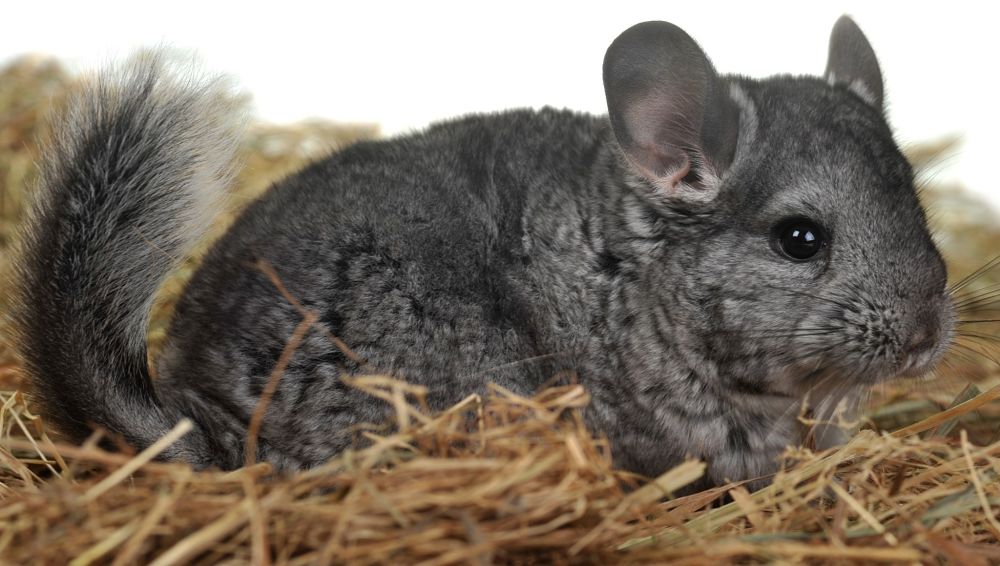
Today, chinchillas are domestically raised on farms for their fur, but the wild populations were so severely damaged that their continued survival is in peril.
Once plentiful throughout the higher elevations of the Andes mountains in the countries of Bolivia, Chile, Argentina and Peru, only isolated populations of the original animals remain in Chile. They live under government protection, and both species of chinchillas are on extinction watch lists.
The domestic chinchilla has been selectively bred in captivity for over a century, and has changed quite a bit from the original wild creatures. At close to 2 pounds each, adult domestic females, who are 30% larger than males, are also nearly 2 times the size of wild chinchillas.
The coat coloring is clearer and more consistent, without the mottling that some wild individuals display. And careful breeding has established pure white, solid black, and champagne colored pelts as well.
But these pleasant little animals are also bred in great quantities as pets, and make very nice companions for the right household.
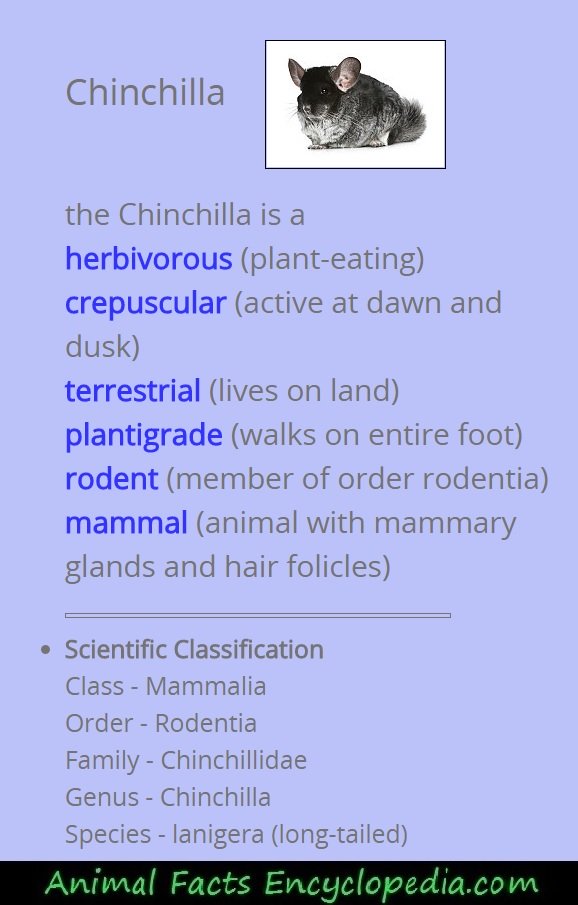
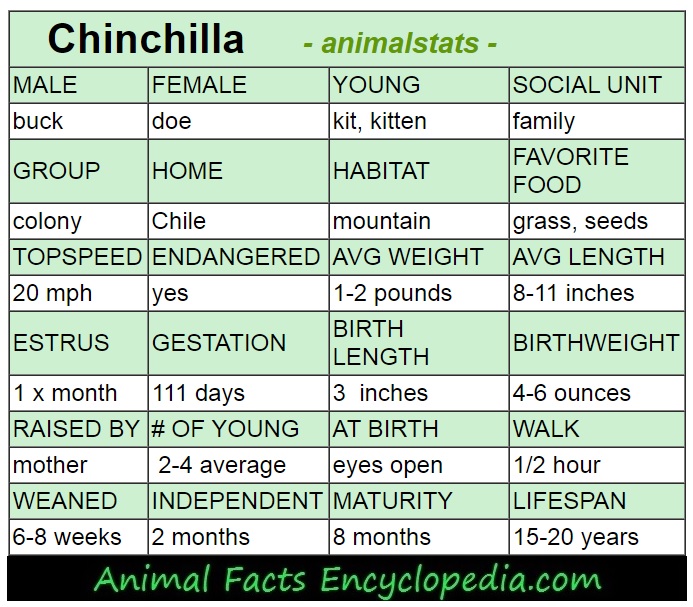
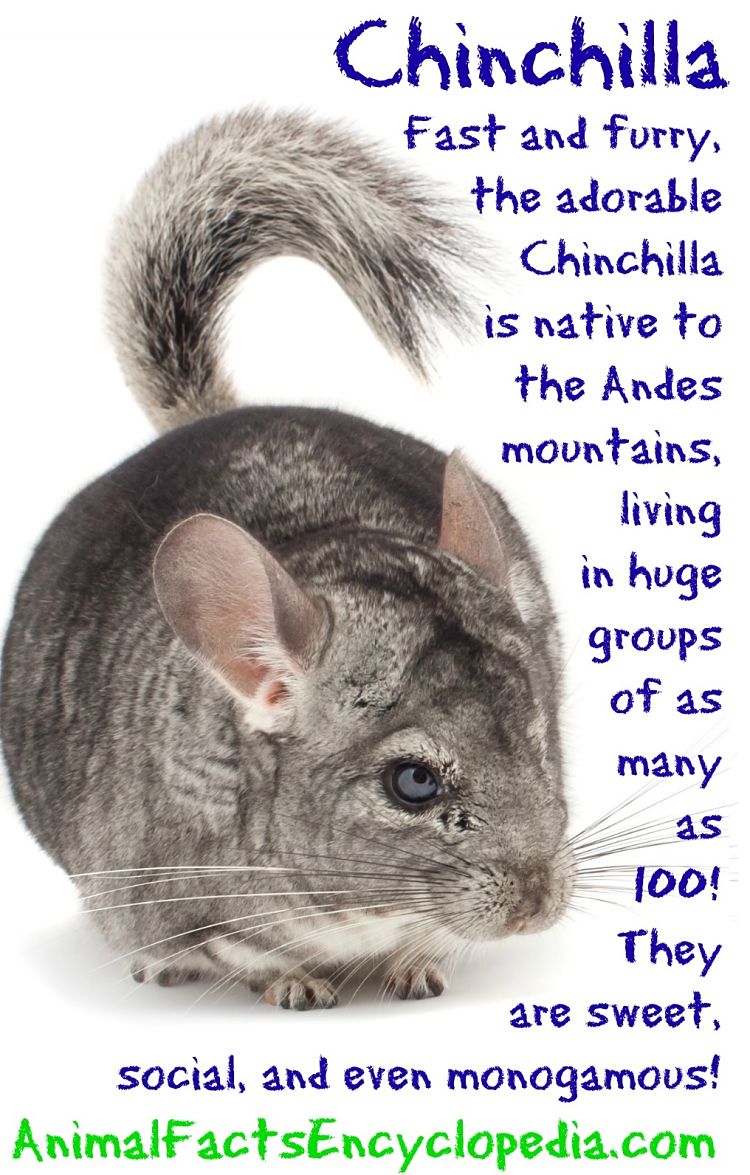
chinchillas as pets
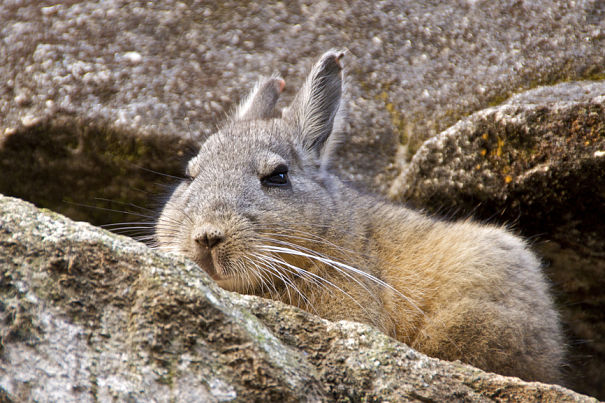
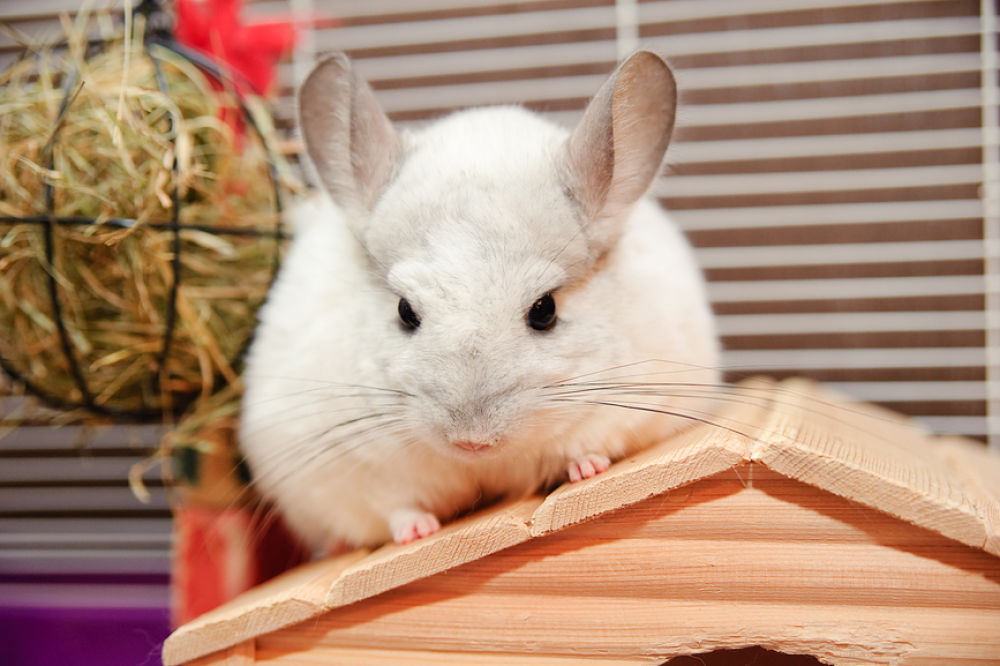
Chinchillas are adorable, soft, little animals, and they have occasionally been kept as pets for hundreds of years by different cultures including the Incas.
Chinchillas are not as common a pet as some other little creatures, but they do share similar traits. They are about the same size as a dwarf rabbit, and like rabbits, they have plush, incredibly soft fur. But they are from an arid environment, like hamsters, and so they drink very little water, and release very little urine. With less urine comes a dramatic decrease in odors often associated with small cage animals.
The cage odors from a chinchilla are substantially less than from rabbits, guinea pigs, rats and mice. Many people don't notice any cage odor at all, and no musky scent from the chinchilla either, which you may find in rats, mice and most certainly ferrets.
In general, the chinchilla may be one of the least smelly pets you can own.
Chinchillas may appear to be sturdy like guinea pigs, but they are easily distressed by rough or clumsy handling, and so are not recommended for smaller children. They also tend to be a little nervous, and can be disturbed and stressed by loud noises. They are sensitive to changes in environment, and may go off their food or literally become sick if their cage is changed to a different location or a member of the family goes on a business trip.
They are bright, active and alert like gerbils, but are largely nocturnal, and may be up all night more like a hamster.
But one of the biggest differences between chinchillas and many other small pets is that the chinchilla can live up to 20 years. If you consider that the average age of a pet hamster is 2 years on the nose, that's quite a difference that may be a plus for some who want to enjoy their companion as long as possible, or a minus for parents who give in and buy a little pet for their 10 year old, but are eventually stuck caring for the rodent while their child goes off to college.
Lastly, chinchillas can become strongly bonded to their owners, showing affection, learning their names, even learning basic tricks, so for the right person, they can be a dream of a pet.
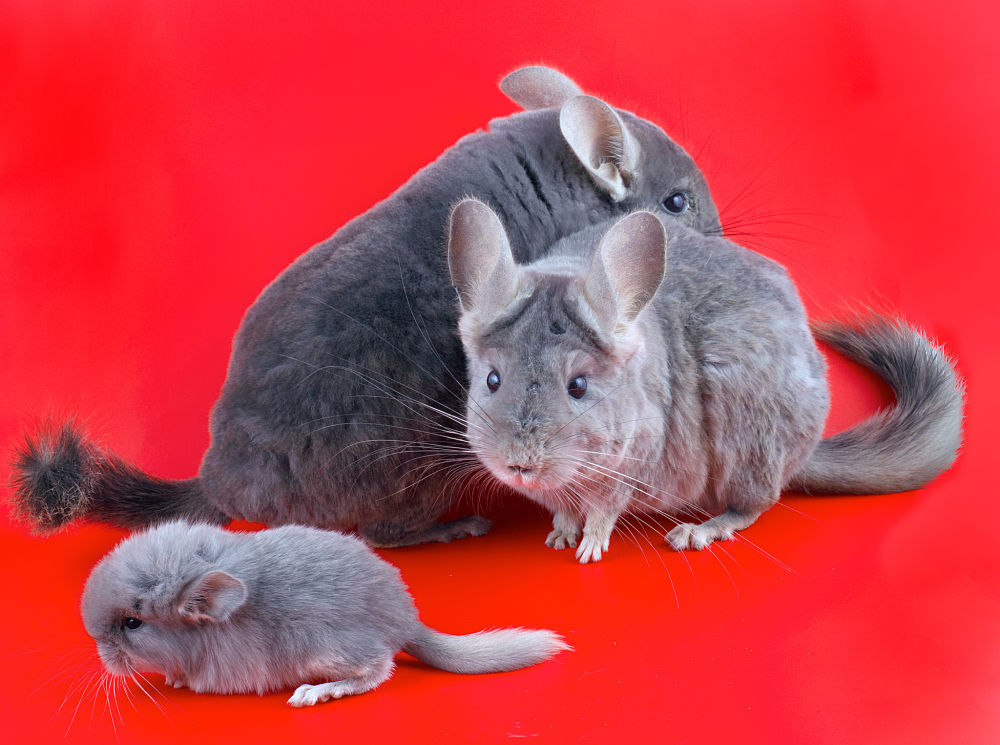
baby chinchillas
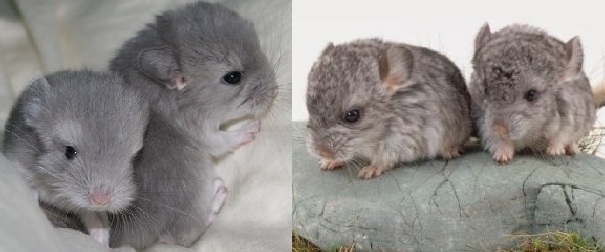
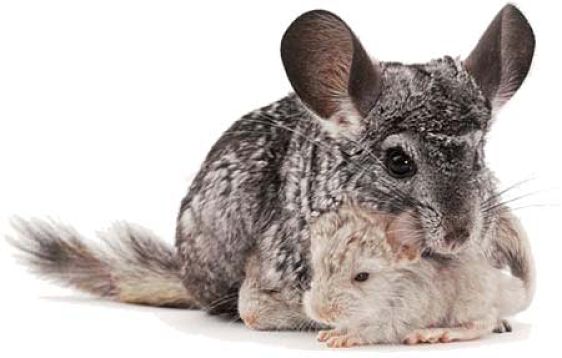 chinchilla mother and babies
chinchilla mother and babiesChinchilla females are generally 15 to 30% larger than males. The reason for this is not clear. Chinchillas are monogamous in the wild. They live in bonded pairs, and unlike many rodents, the male may actually help with the rearing of young.
Within 72 hours of the female giving birth, the pair will mate again, so the female is capable of having 3 litters a year, but 2 is most common.
It is also commonly reported that chinchilla mothers will nurse orphans, or assist in nursing when another mother is weak or sick.
Chinchilla mothers are pregnant for approximately 111 days and give birth to an average of 2 to 4 babies. Baby chinchillas are called "kits". They are born fully furred, with eyes and ears open.
Newborn chinchilla babies will begin to walk around within an hour of birth. They begin to sample food on their own within their first week of life, and by the time they are 8 weeks old they are fully weaned.
The weaning process is quick, and the female usually mates again and has a second litter within the same year. Chinchillas can reproduce very quickly not just because they may have 2 or even 3 litters a year, but also because they reach sexual maturity at as early as 6 months old.
This is why they are found in the wild in such large colonies, of as many as 100 individuals.
Unfortunately, their fast reproduction rate is actually hindering and not helping their population, because available food supplies are dwindling do to the over harvesting of the algorobilla shrub, one of their primary food sources. Mother chinchillas are weakened by the lack of food, and stressed by the number of litters.
Baby chinchillas being raised as pets should be handled often to become accustomed to humans. If started early enough, they can be quite friendly, learn their names, and even learn very basic tricks.
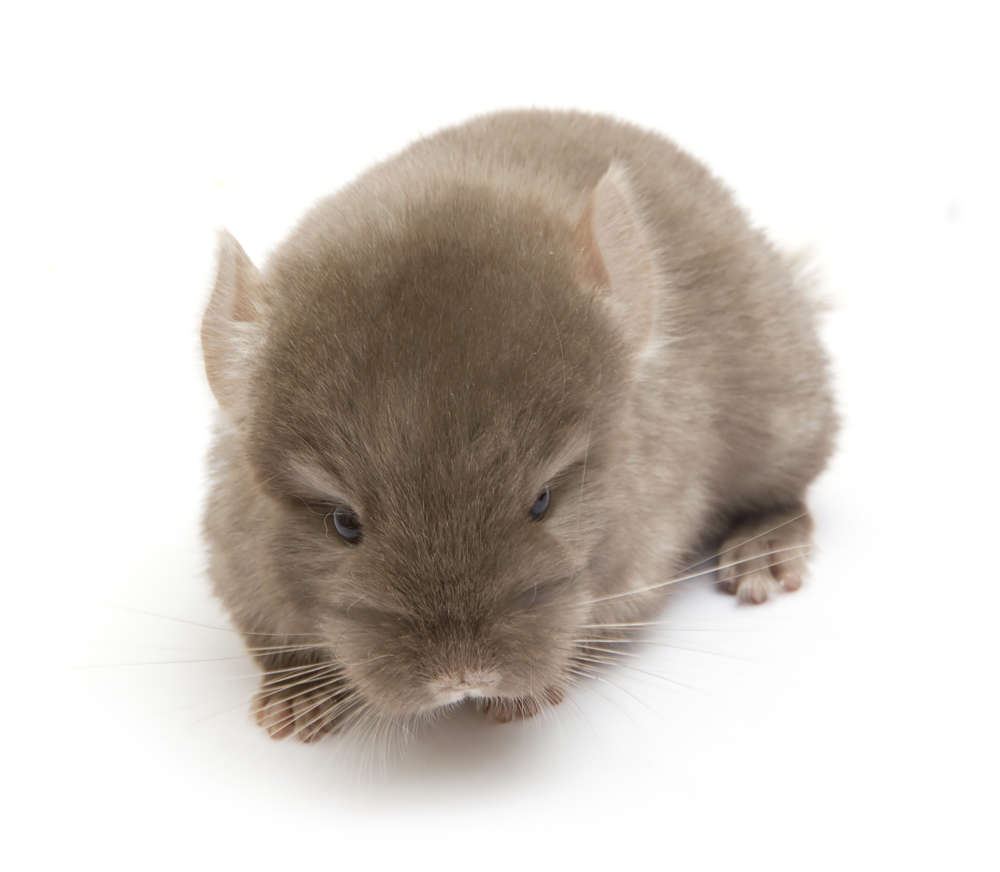

chinchilla adaptions
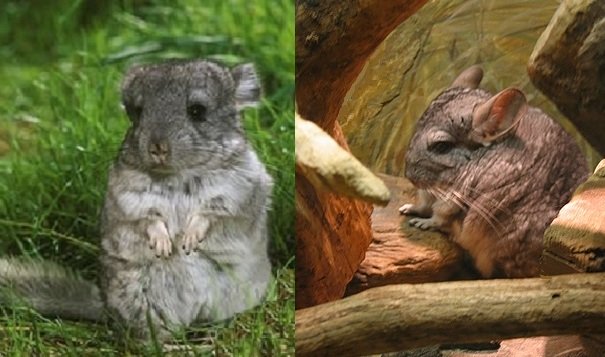
Chinchillas come from such a dry and cold environment that their bodies have developed some unique adaptions. The chinchillas blood is specially designed to carry more oxygen, and they can survive at altitudes of up to 15,000 feet.
Their amazing fur coats are some of the most dense in the animal kingdom, with nearly 200,000 hairs per square inch. The sea otter, however, has approx. 800,000 to 1,000,000 per square inch.
They do not sweat or pant when overheated, but blood will flow to their large, hairless ears to be cooled in warmer weather. When kept as pets, they should not be exposed to temperatures above 75 degrees, and need to be protected from overheating during summer months.
Their mountain environment is also extremely arid with very little rainfall. The chinchilla is used to having dry skin and fur, and can become ill if exposed to damp situations. In the wild, they regularly roll in soft collections of volcanic dust called pumice, which keeps the fur fluffy and standing away from the skin, which allows for the best insulation.
The available plants in the Andes mountain range are low in nutritional value, so chinchillas engage in coprophagy, which is the habit of eating their own droppings.
They actually have two different types of excrement, normal droppings that have no remaining nutritional value, and cecotropes, which are formed from fecal matter that still has some nutrients. The chinchilla takes cecotropes directly from the anus, re-ingesting them to extract more nutrients. An assortment of other mammals and marsupials do this as well, including koala bears and rabbits.
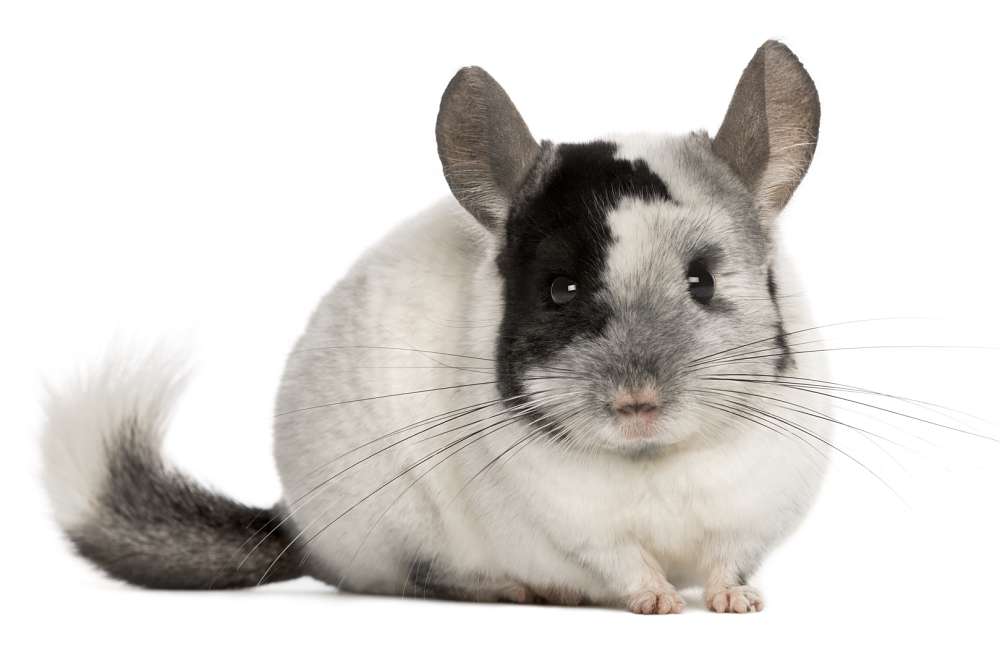
a few more chinchilla facts
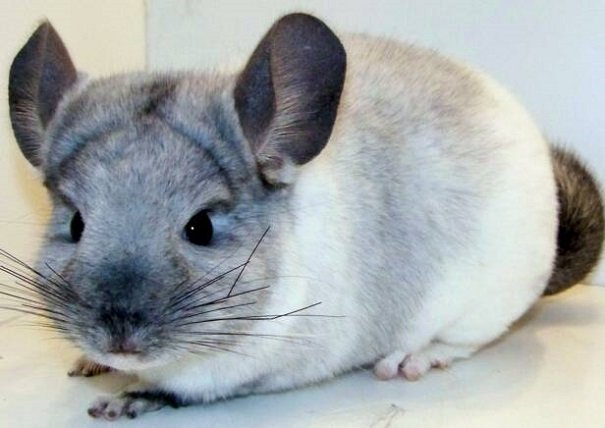
- Chinchilla fur has 60 to 80 hairs per hair follicle
- The chinchilla can leap a crevice 6 feet wide
- Chinchillas take dust baths in volcanic ash
- Chinchillas are one of the longest lived rodents, sometimes living over 20 years
- It takes about 100 chinchillas to make 1 fur coat
- Today, chinchilla fur comes from chinchillas raised on farms
- In the 1900's fur traders hunted chinchillas with dynamite
Scientific Classification:
| Chinchilla - animalstats - | |||
|---|---|---|---|
| MALE | FEMALE | YOUNG | SOCIAL UNIT |
| buck | doe | kit, kitten | family |
| GROUP | HOME | HABITAT | FAVORITE FOOD |
| colony | Chile | mountain | grass, seeds |
| TOPSPEED | ENDANGERED | AVG WEIGHT | AVG LENGTH |
| 20 mph | yes | 1-2 pounds | 8-11 inches |
| ESTRUS | GESTATION | BIRTH LENGTH | BIRTHWEIGHT |
| 1 x month | 111 days | 3 inches | 4-6 ounces |
| RAISED BY | # OF YOUNG | AT BIRTH | WALK |
| mother | 2-4 average | eyes open | 1/2 hour |
| WEANED | INDEPENDENT | MATURITY | LIFESPAN |
| 6-8 weeks | 2 months | 8 months | 15-20 years |
see more animal extreme closeups
Recent Articles
-
African Animals - Animal Facts Encyclopedia
Oct 11, 16 10:27 PM
African Animals facts photos and videos..Africa is a wonderland for animal lovers, and a schoolroom for anyone who wants to learn about nature, beauty and the rhythm of life -
Baboon Facts - Animal Facts Encyclopedia
Oct 11, 16 10:26 PM
Baboon facts, photos, videos and information - Baboons are very distinctive looking monkeys with long, dog-like snouts and close set eyes. -
Great Apes Facts - Animal Facts Encyclopedia
Oct 11, 16 10:25 PM
Great apes facts, photos and videos..Human beings did not evolve from chimpanzees, modern chimps and gorillas do not appear in the fossil records until much more recently than homo sapiens..




















